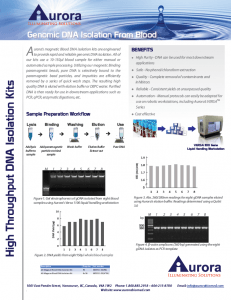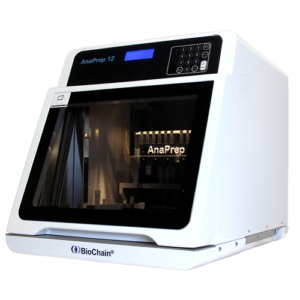Extraction of DNA, RNA, or complete nucleic acids from tests, for example, blood, refined cells, microorganisms, or plant, and creature tissues is basic to the achievement of numerous investigations. Immaculateness and yield of the removed nucleic acids are vital to execution in downstream applications, for example, PCR and sequencing. The objective of the report is to engage our scrutinizes to fathom the various pieces of the Nucleic Acid Extraction System market of english.bioteke.cn and help them to characterize noteworthy business methods.
During purging, examples all advancement however a typical arrangement of controls: cell lysis, clearing, inactivation of nucleases, nucleic corrosive official, washing, and elution.
Improvement of extraction procedures is key for progress, particularly with testing test types and requesting downstream applications. The objective nucleic corrosive ought to be cleaned liberated from contaminants, including proteins, other cell segments, and undesired nucleic acids.
Most DNA extraction techniques filter DNA away from other cell materials by restricting the DNA to a strong help, for example, silica or cellulose, cleansing the separated DNA away from contaminants by washing, and afterward eluting the sanitized DNA into water or cushion.

Nucleic corrosive segregation and downstream applications:
The particular properties of nucleic acids have been generally utilized in the improvement of various atomic strategies and scientific models for their examination. These techniques are applied to distinguish microorganisms and hereditary inclinations, to recognize various transformations and decide their job in anti-toxin obstruction, to examine phylogenetic connections, etc. What every one of these strategies shares in like manner is their beginning stage: acquiring a cleaned nucleic corrosive example.
Nucleic Acid extraction techniques:
Since nucleic corrosive extraction is a beginning stage in a huge swath of downstream applications, the high caliber of nucleic acids in the beginning examples is a key factor for the achievement of the ensuing strides of examination. In this way, nucleic corrosive extraction could be characterized as a progression of steps to acquire nucleic corrosive examples/materials of a specific virtue that are liberated from contaminations and are appropriate for various downstream application steps. The motivation behind nucleic corrosive extraction techniques is to crumble the cell envelope and accomplish the greatest disposal of lipids and proteins to acquire unadulterated DNA as well as RNA.
The strategies for the readiness of nucleic corrosive examples can be gathered into warm extraction, arrangement based techniques (natively constructed and business packs), segment-based techniques, and ones those utilization attractive particles. It very well may be utilized to separate DNA from unadulterated bacterial societies. There are various varieties of the technique [8, 9], yet they by and large incorporate the accompanying method: societies grown 18–24 h are utilized; weakening are set up in Ultra-unadulterated 18.2 Mω DNase/without RNase water when utilizing society stock, 1:40, or when utilizing agar societies, 0.5 McF in 1 mL; the examples are warmed at 100°C for 5–15 min and afterward centrifuged; the supernatant is taken and put away at – 20°с.
Regardless of its points of interest, this technique has a few confinements: it can’t dispense with low atomic weight peptides and gives a low 260/280 nm proportion (virtue), i.e., about 0.600. Warm extraction is a piece of the authority VTEC E. coli analytic methodology, which depends on the identification of our quality sections up to 384 bp long.
